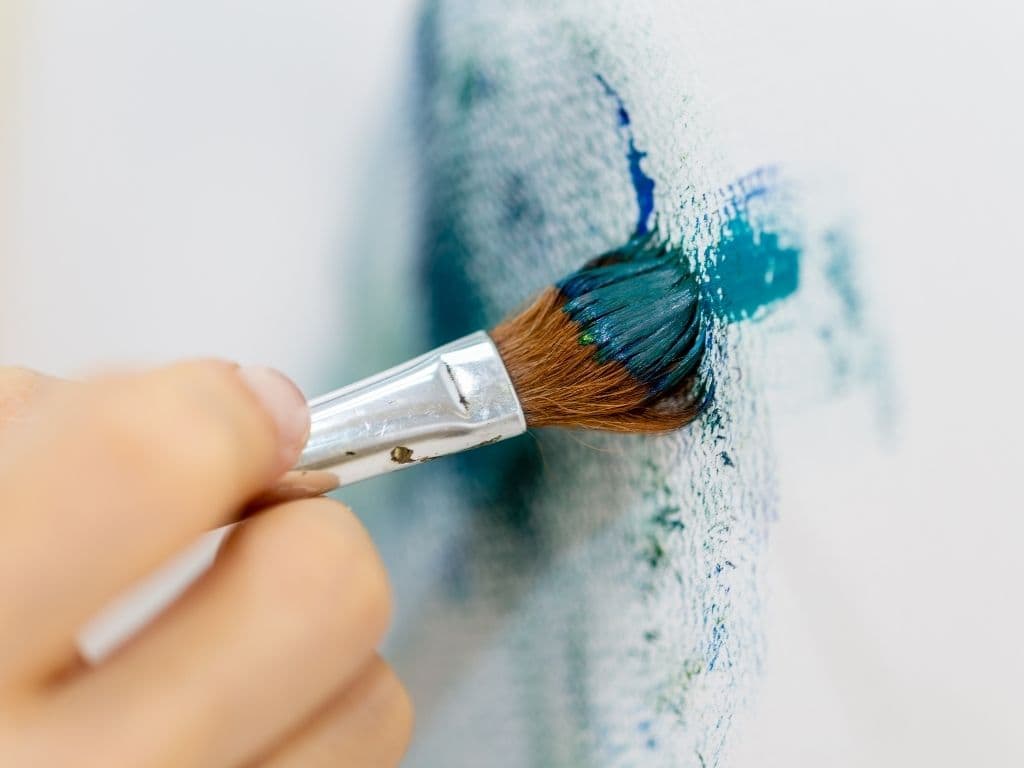Art will always be an area for debate, but there are a few artists that most members of the artistic community consider to be the best of the best. For example, no one’s going to argue against the artistic merits of Vincent Van Gogh. Today, I’m going to focus on another artistic legend: Rembrandt and how he painted.
How did Rembrandt paint? Rembrandt painted using the impasto technique, in which enough paint is applied to the canvas that it physically stands out from the surface of the canvas. This makes brush strokes more visible and it allows for a different reflective effect when light comes into contact with the paint.

That being said, there’s a lot more to know about Rembrandt’s painting techniques than the fact that he used impasto. After all, if it were that simple, then everyone who used the method would be remembered as one of the best painters in human history.
How Did Rembrandt Paint?
The word impasto comes from the Italian verb impastare, translating to impaste which means putting something in paste. As I mentioned before, it means layering enough paint on the canvas that it begins to stand out from the canvas itself, though this technique doesn’t work with all paint types.
This is why oil-based paint is typically used in impasto techniques. The combination of a slow drying time and a viscous form makes oil-based paint the best option for impasto because it allows you to more easily layer it on top of the canvas more thickly.
On the other hand, watercolor paint is rarely ever used for impasto because it does not form a film over other paints, making it harder to layer.
One of the main advantages of impasto is that it allows the highlights to be deeper because of how light reflects off of the layers. The relief of the paint can intensify how the paint reflects light, meaning that darker parts of the paint are darker while the bright parts appear brighter to the eye.
This allowed like Rembrandt to increase the range of tones that are present in a painting without actually having to change the kind of pain they’re using. This at once makes for a more consistent painting but one that has a deeper range of colors than you’d see in other pieces.
However, this advantage of impasto isn’t unique to Rembrandt. The one thing that sets Rembrandt apart from other impasto artists is his ability to use the technique to accurately represent human skin and other wrinkled surfaces, such as fabrics.
With sufficient manual dexterity, an artist like Rembrandt can work over an impasto with tremendous skill, putting in minute striations that create the wrinkles in skin and fabrics. Along with making the wrinkles seem more realistic, they make the viewer imagine what it would feel like to run their fingers over the skin or material.
Finally, impastos can also allow artists to emphasize what their paint looks like physically. Since paint can have imperfections and less noticeable details in it when applied to a canvas, making it stand out from the canvas can show the viewer more about its physical properties.
In Rembrandt’s case, an observer can notice the use of impastos to make highlights appear deeper by increasing the amount of illumination on surfaces that face the source of light. On the other hand, he also used impasto to make darker surfaces look more shadowed.
However, other parts of Rembrandt’s technique are a little harder to understand, and they may have been nascent modern art techniques that he pioneered. For example, some art scholars assume that he created textures by layering thick paint onto a surface and then brushing over it while the paint is still wet.
After creating the textures on this thick layer of paint, he would then glaze over it with a thinner paint either wholly or partially. In fact, this thin glaze was where Rembrandt distinguished himself from other artists of the era, since he formulated his own white paint using lead carbonate plumbonacrite.
This paint was designed to dry fast to ensure that it would work well as a glaze, especially when placed over other layers of thicker paint.
All of this comes together to make Rembrandt famous and to be known as one of the best Dutch painters of all time alongside Van Gogh (no, he wasn’t French). Perhaps the most memorable thing about Rembrandt is his attention to detail, immortalized in his use of the impasto technique.